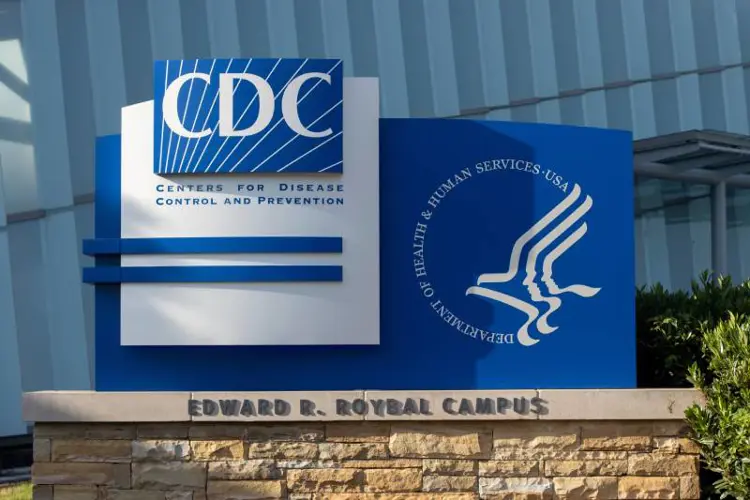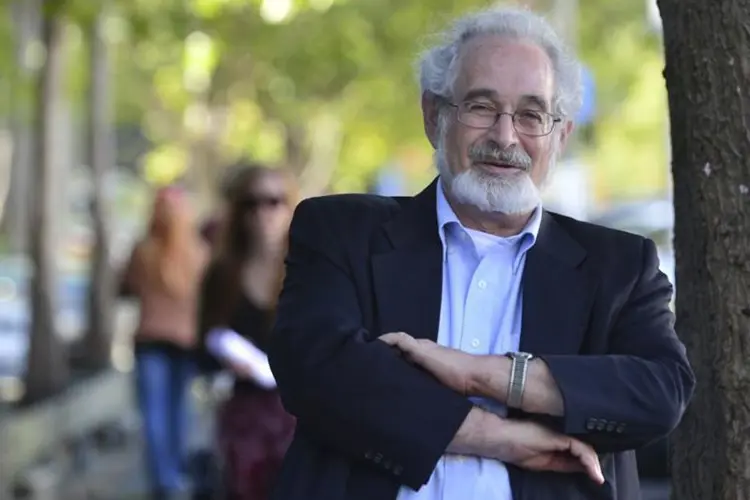The outbreak of lung injuries apparently caused by vaping may be leveling off or even declining, according to the Centers for Disease Control and Prevention (CDC). And while the federal agency is finally assigning “most” of the blame to black market THC products, it continues to use the nicotine vaping term “e-cigarettes” to describe the products causing harm.
As of last Tuesday (the most recent official update), 1,604 cases have been reported from 49 states (all except Alaska), the District of Columbia, and the U.S. Virgin Islands. The CDC says 34 people from 24 states have died.
The CDC’s Principal Deputy Director Dr. Anne Schuchat told reporters Friday that the people who have died ranged in age from 17 to 75, with a median age of 45. That compares to a median age of just 23 for those who survived their injuries. Schuchat said the “vast majority” of patients had a history of vaping THC products—85 percent of those for whom the agency has data.
“Remember that these are self-reports,” said Zeller. “It’s the person saying, ‘I only used the nicotine-containing products.’ There is the question of...whether, in fact, when they say ‘the only thing I used was a nicotine-containing product,’ that turns out to be the case.” Zeller notes that many of the victims live in states where cannabis products are illegal, and many are also underage.
In other words, to avoid complications like criminal charges or problems with parents, some cannabis oil users might fudge the facts about what they have been vaping. And because patients are being handled according to the public health protocols of the states they live in, there is no mandated across-the-board THC testing.
To date, not a single lung injury case has been connected to a nicotine vaping product.
CDC is still using the term “e-cigarettes”
The agency is unfortunately calling the injuries EVALI, short for “E-cigarette , or Vaping, product use Associated Lung Injury.” The CDC seems committed to its misleading messaging, and is still attaching the term “e-cigarette” to the outbreak, despite its own admission that most of the victims say they were using illicit cannabis oil (or hash oil) cartridges (carts), and not nicotine vaping products.
Cannabis oil vapers don’t call their products e-cigarettes. That is a name used only for nicotine vapes. The CDC’s stubborn resistance to using terms that are recognizable to consumers of the dangerous products could very well account for many of the recent injuries.
The early messaging on the outbreak was handled by the CDC’s resolutely anti-vaping Office on Smoking and Health, and the whole agency has continued to use that office's terminology since then, possibly encouraging millions of cannabis oil vapers to continue using dangerous untested hash oil carts because they believed "e-cigarettes" (nicotine products) were the things to avoid.
The CDC seems to be using the lung injury outbreak as a way of encouraging—or at least enabling—local and state bans and restrictions on nicotine products. Seven states have banned flavored vaping products since the outbreak began, mostly in direct response to the lung injuries or at least using them as a secondary reason. The Trump administration has also proposed a federal flavor ban. But flavors in legal vaping products have nothing to do with these injuries.
What is causing the lung injuries?
Exactly what in the illicit oil carts is causing the lung damage isn’t certain, according to the CDC. The agency is apparently looking for some novel explanation that hasn’t been advanced so far, or for a combination of factors. They are testing the victims’ lung fluids, and the FDA is testing the contents of products sent from state agencies.
CDC seems to have discarded the possibility that recently introduced cannabis oil diluting agents containing vitamin E acetate are responsible for all or most of the injuries. That conclusion is at least partly based on a Mayo Clinic study that looked at lung biopsies of some of the victims and discovered injuries that don’t resemble those expected from vitamin E acetate.
Vitamin E (tocopherol / tocopheryl) acetate hasn’t been detected in most of the FDA-tested cartridges, according to Zeller. Whether the CDC thinks the diluent plays a part in the outbreak at all—possibly in combination with other factors—is not certain.
Another early suggestion was the fungicide myclobutanil, which can release the lung toxin hydrogen cyanide when heated. Using myclobutanil on tobacco is illegal, but it is commonly used on grapes and other fruit. The CDC hasn’t commented on the substance as a potential cause, but testing of various black market products by Leafly has found myclobutanil and other fungicides and pesticides in frighteningly high concentrations. This and similar substances may yet be found to play a part in the outbreak.
One possibility is the cartridges themselves, says Dr. Schuchat. The CDC is investigating “whether heavy metals or other dangerous compounds may be released in the process of the heating that occurs or the battery-operated device.”
A company called Colorado Green Lab has published an interesting hypothesis, suggesting that the injuries are caused by “cadmium pneumonitis,” a lung condition caused by inhaling cadmium fumes. Cadmium is commonly found in silver solder.
Most cannabis oil carts sold through legal channels don’t use silver solder, because the products must pass rigorous mandated testing before being sold in state-licensed dispensaries. But the less expensive carts used by some illegal oil processors could contain the dangerous solder.
There are some problems with this theory (cadmium has a very high melting point), but cadmium or other metals that may be used in cheap oil cartridges could be at least partly responsible for the injury outbreak. Whatever is causing the lung problems is something found almost exclusively in black market products, and something that is relatively new.
Why isn’t the CDC’s deception a story?
If the CDC continues advancing the message that “e-cigarettes” are responsible for the lung injury outbreak, and more cannabis consumers continue to use THC carts and become victims, why aren’t mainstream news outlets picking up on it and asking the CDC to account for its messaging?
Almost every mainstream reporter has followed the CDC’s lead in describing the offending products as e-cigarette and vaping devices. They have also sought out typical anti-vaping tobacco control experts for their articles, allowing those dogmatists to speculate about unlikely and bizarre possibilities, like JUUL pods causing the lung injuries, or consumers “mixing” THC with nicotine (as though that would cause some unholy chemical reaction).
The mainstream press seems disinterested in the story of a large federal agency using a tragic event to advance an ideological war on nicotine products. And until recently, most news outlets even ignored the juicy story of illegal cannabis processing and distribution operations using untested diluting agents and selling products filled with pesticides.
It has been cannabis publications like Leafly that have done the best work covering the outbreak and its possible causes. And it has been activist vapers and the pro-vaping voices of people like like researchers Michael Siegel and Brad Rodu that have raised alarms about the CDC, and pressured the agency to modify its messaging to put more emphasis on THC products.
It’s hard to imagine reporters covering any other federal agency simply accepting officials’ statements without challenge. Imagine if the imprecise language of the State Department contributed to several dozen deaths. Would news outlets shrug and continue to repeat the official government messaging, or would they tear into the story with gusto and expose those responsible at the agency?
But “health” writers see themselves as partners of the government public health agencies—and even partners of the anti-vaping tobacco control organizations—rather than as adversarial seekers of truth whose job is to hold the federal officials’ feet to the fire. So we keep hearing the same story over and over. And people keep dying.
The Freemax REXA PRO and REXA SMART are highly advanced pod vapes, offering seemingly endless features, beautiful touchscreens, and new DUOMAX pods.
The OXVA XLIM Pro 2 DNA is powered by a custom-made Evolv DNA chipset, offering a Replay function and dry hit protection. Read our review to find out more.
The SKE Bar is a 2 mL replaceable pod vape with a 500 mAh battery, a 1.2-ohm mesh coil, and 35 flavors to choose from in 2% nicotine.
Because of declining cigarette sales, state governments in the U.S. and countries around the world are looking to vapor products as a new source of tax revenue.
The legal age to buy e-cigarettes and other vaping products varies around the world. The United States recently changed the legal minimum sales age to 21.
A list of vaping product flavor bans and online sales bans in the United States, and sales and possession bans in other countries.


















